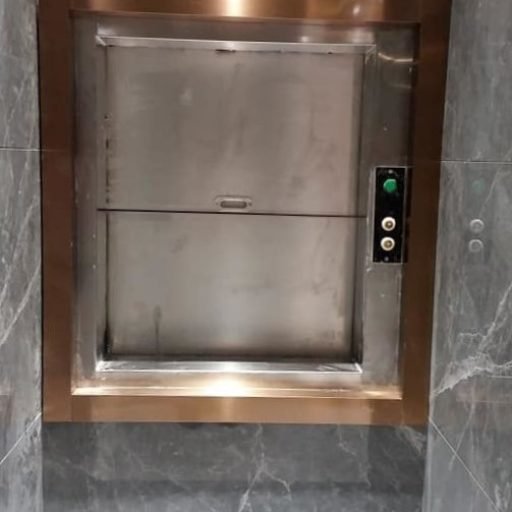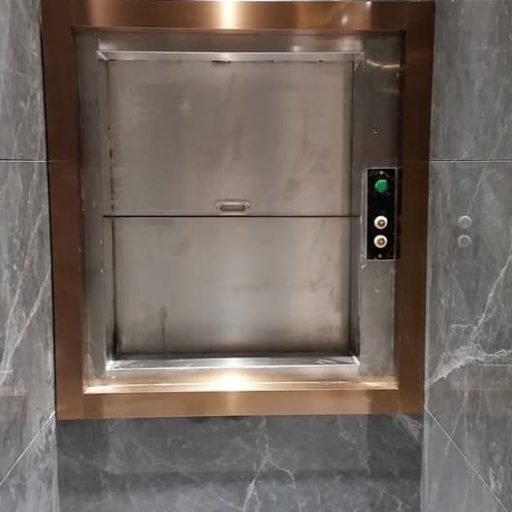Food Elevators





ProjectDetails
- RSasmito Studio
- Sidoarjo, East Java, ID
- March, 2019
- Manual Models: 1 , 000 to 1,000to3,000.
- Electric Models: 3 , 000 to 3,000to10,000+.
- Custom or High-End Models: 10 , 000 to 10,000to20,000+.
DownloadBrochure
General Information
A food elevator, also known as a dumbwaiter, is a small freight elevator or lift designed to transport food, dishes, groceries, or other small items between floors in a building. It is commonly used in restaurants, hotels, hospitals, large homes, and other multi-story buildings to streamline the movement of goods and reduce the need for manual carrying. Below is a comprehensive overview of
- Compact Size: Food elevators are typically small, with dimensions ranging from 1 to 3 feet in width and depth, making them ideal for transporting items without taking up much space.
- Load Capacity: They are designed to carry light to moderate loads, usually between 50 to 500 pounds, depending on the model.
- Manual or Automated Operation: Food elevators can be operated manually (using ropes or pulleys) or electrically (with motors and controls).
- Safety Features: Modern food elevators include safety mechanisms such as door interlocks, overload sensors, and emergency stop buttons.
- Customizable Design: They can be customized to fit specific building layouts, with options for different finishes, door styles, and sizes.
Manual Food Elevators:
Operated using a pulley system or hand crank.
Simple and cost-effective but requires physical effort.
Often used in smaller establishments or residential settings.
Electric Food Elevators:
Powered by an electric motor.
Equipped with push-button controls for easy operation.
Suitable for high-traffic areas like restaurants and hospitals.
Hydraulic Food Elevators:
Uses hydraulic power for smooth and quiet operation.
Ideal for heavy-duty use in commercial settings.
Chain-Driven Food Elevators:
Uses a chain mechanism to move the carriage.
Durable and suitable for medium to heavy loads.
Restaurants and Hotels:
Used to transport food from kitchens to dining areas or between floors.
Helps maintain food temperature and presentation.
Residential Homes:
Convenient for moving groceries, laundry, or meals between floors.
Popular in multi-story homes or for elderly or disabled individuals.
Hospitals and Nursing Homes:
Transports meals, medications, and supplies efficiently.
Reduces the need for staff to carry heavy trays.
Libraries and Offices:
Used to move books, documents, or small equipment between floors.
Efficiency: Saves time and effort by automating the transport of items.
Space-Saving: Compact design minimizes the use of valuable floor space.
Improved Workflow: Enhances productivity in commercial settings.
Accessibility: Provides a convenient solution for moving items in multi-story buildings.
Hygiene: Reduces the risk of contamination by minimizing human contact with food.
Installation:
Requires professional installation to ensure safety and compliance with building codes.
Involves creating a shaft or enclosure for the elevator.
Electrical models require wiring and connection to a power source.
Maintenance:
Regular inspections and lubrication of moving parts.
Checking safety features and sensors.
Cleaning the interior to maintain hygiene.
Weight Limits: Avoid overloading to prevent mechanical failure.
Door Interlocks: Ensure doors are securely closed during operation.
Emergency Stop: Install and test emergency stop buttons.
Child Safety: Use locks or guards to prevent unauthorized access.
Food elevators have been used since ancient times, with early versions found in Roman and medieval buildings.
The modern dumbwaiter gained popularity in the 19th century, especially in large homes and restaurants.
Today, they are a common feature in both residential and commercial buildings worldwide.
- Food elevators must comply with local building codes and safety standards.
- In some regions, they may require permits or inspections.
- Commercial installations often need to meet ADA (Americans with Disabilities Act) or OSHA (Occupational Safety and Health Administration) guidelines.
Smart Technology: Integration with IoT for remote monitoring and control.
Energy Efficiency: Use of eco-friendly motors and materials.
Customization: Increased demand for aesthetically pleasing designs to match interior decor.
In summary, a food elevator is a practical and efficient solution for transporting items between floors in various settings. Whether for residential convenience or commercial efficiency, it offers numerous benefits while enhancing workflow and accessibility.
